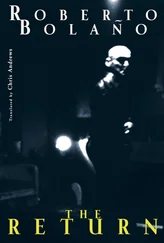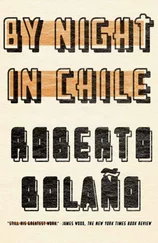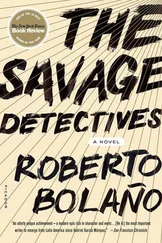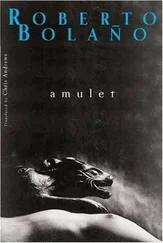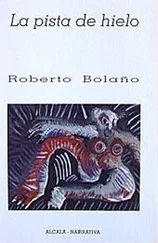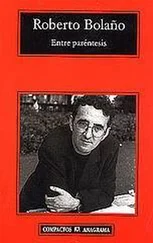Roberto Bolaño - Between Parentheses - Essays, Articles and Speeches, 1998-2003
Здесь есть возможность читать онлайн «Roberto Bolaño - Between Parentheses - Essays, Articles and Speeches, 1998-2003» весь текст электронной книги совершенно бесплатно (целиком полную версию без сокращений). В некоторых случаях можно слушать аудио, скачать через торрент в формате fb2 и присутствует краткое содержание. Год выпуска: 2011, Издательство: New Directions, Жанр: Публицистика, Критика, на английском языке. Описание произведения, (предисловие) а так же отзывы посетителей доступны на портале библиотеки ЛибКат.
- Название:Between Parentheses: Essays, Articles and Speeches, 1998-2003
- Автор:
- Издательство:New Directions
- Жанр:
- Год:2011
- ISBN:нет данных
- Рейтинг книги:4 / 5. Голосов: 1
-
Избранное:Добавить в избранное
- Отзывы:
-
Ваша оценка:
- 80
- 1
- 2
- 3
- 4
- 5
Between Parentheses: Essays, Articles and Speeches, 1998-2003: краткое содержание, описание и аннотация
Предлагаем к чтению аннотацию, описание, краткое содержание или предисловие (зависит от того, что написал сам автор книги «Between Parentheses: Essays, Articles and Speeches, 1998-2003»). Если вы не нашли необходимую информацию о книге — напишите в комментариях, мы постараемся отыскать её.
The Savage Detectives
Between Parenthese
Between Parentheses: Essays, Articles and Speeches, 1998-2003 — читать онлайн бесплатно полную книгу (весь текст) целиком
Ниже представлен текст книги, разбитый по страницам. Система сохранения места последней прочитанной страницы, позволяет с удобством читать онлайн бесплатно книгу «Between Parentheses: Essays, Articles and Speeches, 1998-2003», без необходимости каждый раз заново искать на чём Вы остановились. Поставьте закладку, и сможете в любой момент перейти на страницу, на которой закончили чтение.
Интервал:
Закладка:
In fact, the voyage to Patagonia has long transcended the bounds of literature. There are paintings in which artists, with more enthusiasm than talent, present their vision of the plain, the glaciers, the barren land. There are musical compositions in which the word Patagonia rhymes with Celedonia . There’s even a movie, the director of which I can’t recall, that tells the story of a dentist, English or maybe Canadian, played by Daniel Day Lewis, who rides a motorcycle across Patagonia on a personal crusade against cavities.
For a while Patagonia replaced the tropics as a source of landscapes suitable for magic realism. And I even seem to remember a proposal — this was some time ago — to cede a big piece of Patagonia’s unoccupied territory to either the League of Nations or the United Nations (the former, I think) for the founding of a Jewish republic, or for the settlement of some wandering Asian nation, probably Chinese refugees fleeing Japanese aggression, a proposal that outraged the Argentines of the day and that, if it had taken effect, would surely have given rise to the most civilized and prosperous country in all of South America.
Where does the name Patagonia come from? From its primitive inhabitants, the Patagon Indians, who were described by the Spanish explorers as giants, and giants with enormous feet too, bigger than any European’s, which was perhaps only logical considering that they were giants. The first to spot them (and also the last, it’s said) were Magellan’s brave sailors, bent on sailing around the globe, which in the end, after many hardships, they succeeded in doing, leaving more than half of the crew in their wake, dead of disease, starvation, and various kinds of exposure. A chronicler of the trip, the Italian Pigafetta, describes these giants as ten feet tall. He was probably exaggerating. In the nineteenth century, less fanciful travelers claimed to have seen Patagons who were six and a half feet tall. Today, the few that remain are well under six feet.
The border of Patagonia isn’t something that everyone can identify with utter certainty, least of all Argentines. According to the novelist Rodrigo Fresán, whom I consulted, Patagonia begins when you cross the Río Negro. Meanwhile, some bus drivers from Buenos Aires who drive the southern routes think that Patagonia begins where the province of Buenos Aires ends. According to an Argentine friend, Patagonia begins when you cross over into the province of Chubut, quite a bit further south than most people believe. According to another Argentine friend, Patagonia doesn’t exist at all. I considered putting the question to Alan Pauls, one of my favorite Argentine writers, but I was afraid to.
Beyond debate is the fact that Patagonia is huge and full of its own particular kind of ghosts. No traveler can see everything, partly because Argentina isn’t cheap and partly because there’s so much land to cover, which means that it takes at least six months to visit what the tour guides call its hidden gems, even in the most superficial way.
For example, Neuquén. Not only is Neuquén the only Patagonian province with no outlet to the sea, it’s also the the only one to share a border with Chile, which makes it a kind of Bolivia in the geostrategic imagination of the Chilean military, who might just as well be Prussian. Neuquén is like Jurassic Park, South America’s lost world of dinosaurs. In Neuquén, one bumps into tyrannosauruses and pterodactyls on every corner. The ranchers of Neuquén no longer speak of heads of cattle but of velociraptors. Pilgrimages of paleontologists are notable in the spring and summer months.
The tourist generally gets around by plane, which makes sense. But the best way to travel in Patagonia is by hitchhiking. For example, one can take a bus to Choele Choel or fly to Bahía Blanca, and then hitchhike. That, at least, was how the cash-strapped Argentines who couldn’t make it to Europe in the 1960s traveled, and that’s how some Patagon Indians still travel when curiosity or some urgent errand brings them to the capital or to La Plata, that sinister city that Bioy pondered in his old age. Once in Choele Choel the traveler must ask himself a crucial question: Which way? The two routes into Patagonia are very different. Either you head for Bariloche or you head for Puerto Madryn. In Bariloche, the unsuspecting tourist will find the Andes and a legion of skiers, snow fanatics with perfect tans and serious psychological and sexual issues who stay at the Llao-Llao, a 1940s hotel vaguely reminiscent of a thermal spa. In Puerto Madryn, on the other hand, he’ll come upon the Atlantic, which at these latitudes (though it depends on the time of year, of course) is a distinctly horrible shade, like the color of some rotting animal or the skin of a rotting carcass, something from an abandoned tannery, although the sea, as always, smells good. And from here one can visit the Valdés Peninsula, which is the northern edge of the Golfo Nuevo, or, better yet, leave Puerto Madryn and head for Trelew and Rawson, which are nearby, and where, at daybreak, if one climbs up on a certain rock out in the country called the Rock of Yanquetruz, one can hear the cries carried on the wind from both cities, cries that speak vaguely of young recruits, young prisoners, nausea, and herds of pigs.
After this it’s best to hop on the first bus out of Trelew, and also Rawson. But here the indefatigable traveler is presented with another dilemma. Either he must take the road west, toward the mountains, toward Trevelín and Esquel, and visit Leleque and El Maitén, mountain towns of the province of Chubut, with stops at Los Alerces National Park or Lago Puelo National Park or even, if the traveler is unusually curious, the Cochamo Pass, where he can look over into Chile without knowing exactly why or what for, or he must take the road south, toward Comodoro Rivadavia and the Petrified Forest. South of the Petrified Forest anything can happen. Between the road that runs along the foot of the mountains and the road that runs along the Atlantic, there lies a vast expanse of land, the last place, the land toward which the hitchhiking Patagons are headed, crossed every so often by secondary roads or dirt tracks that first demoralize the traveler and then make him lose his way and finally plunge him into a kind of mystical delirium that hunger and good breeding manage to allay. The two roads meet in Río Gallegos, the last city in Patagonia. Beyond it, across the Straits of Magellan, is the Argentine and Chilean Tierra del Fuego, but that’s another story.
Fateful Characters
What is clarity in photography? Is it seeing what needs to be seen and not what doesn’t? Is it keeping one’s eyes always open and seeing everything? Is it choosing what to see, making what one sees speak? Is it seeking, amid an avalanche of empty images, the thing the eye perceives as beauty? Is it the vain search for beauty?
The killer sleeps as the victim photographs him. This sentence, spoken with weary calm in a near whisper, has been haunting me or my shadow for years. The killer sleeps. The victim takes pictures. In images: a cheap single bed in a room neither bright nor dark, an unsuspecting man on the bed, asleep on his stomach or his side, wearing undershorts and a T-shirt, dark socks, no sheet to cover him, in the sleeper’s customary state of abandon, and a shadow, neither man nor woman, just a shadow, an androgynous silhouette at the foot of the bed, pitched toward the left, toward the center of the room, who holds aloft a little camera and peers through the lens, as intently focused as the sleeping man, but (and this is another sign of horror and normality) in a different way. The camera that the shadow holds — it’s important to emphasize this — appears to be fixed on a tripod, an imaginary tripod in the middle of a slightly messy room, a room that may or may not be a hotel room. Either way, it seems to be the sleeper’s (or killer’s) room, not the photographer’s (or victim’s) room, though the latter moves around it with a kind of familiarity, a growing familiarity, in which one senses equal degrees of perseverance and pain, rebellion and resignation, as if reality had curved, and time, if only for an instant, were gazing backward.
Читать дальшеИнтервал:
Закладка:
Похожие книги на «Between Parentheses: Essays, Articles and Speeches, 1998-2003»
Представляем Вашему вниманию похожие книги на «Between Parentheses: Essays, Articles and Speeches, 1998-2003» списком для выбора. Мы отобрали схожую по названию и смыслу литературу в надежде предоставить читателям больше вариантов отыскать новые, интересные, ещё непрочитанные произведения.
Обсуждение, отзывы о книге «Between Parentheses: Essays, Articles and Speeches, 1998-2003» и просто собственные мнения читателей. Оставьте ваши комментарии, напишите, что Вы думаете о произведении, его смысле или главных героях. Укажите что конкретно понравилось, а что нет, и почему Вы так считаете.



